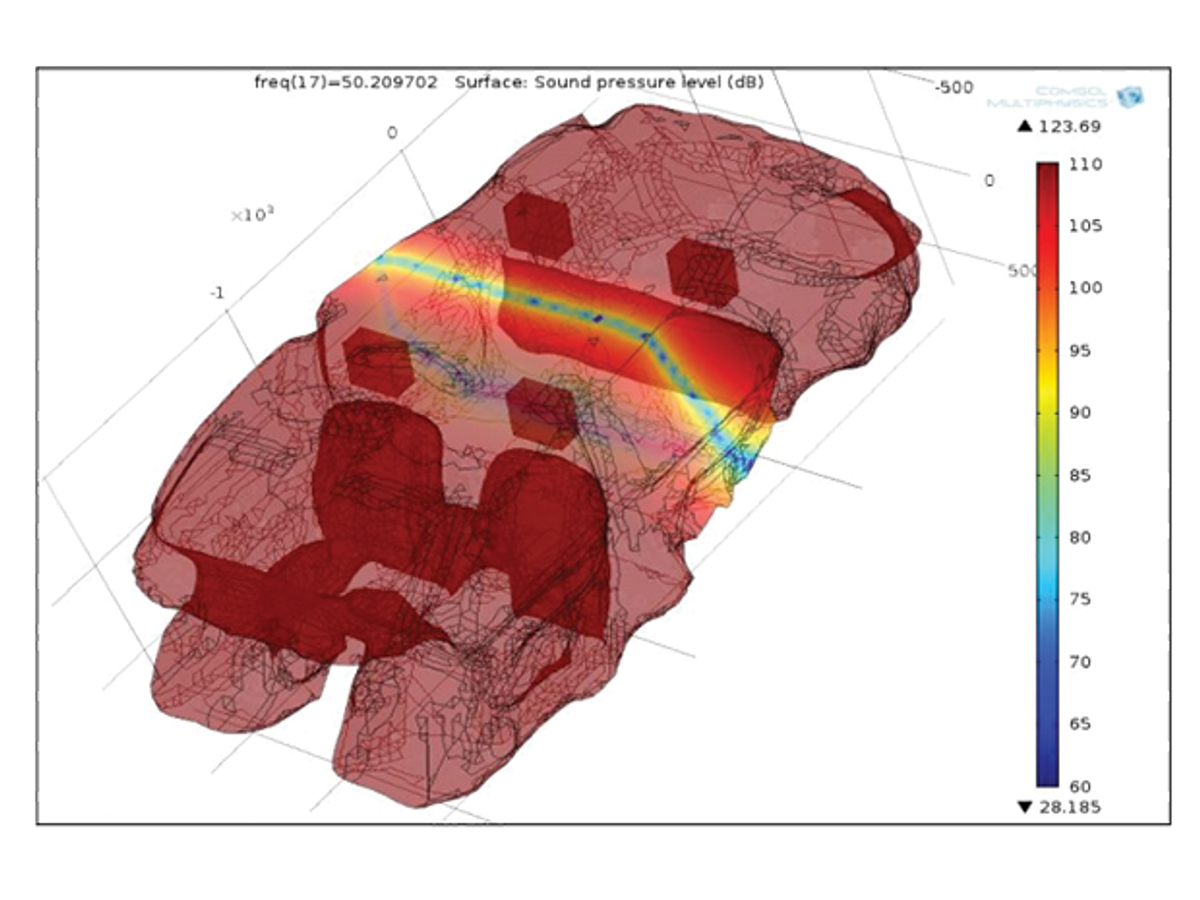The following is an excerpt from Multiphysics Simulation 2016.
Today’s vehicles offer dazzling electronic entertainment possibilities, from smartphone connectivity to interactive displays and video screens. HARMAN is the market leader in these connected car setups, equipping more than 80% of the world’s luxury cars with premium audio systems.
Each vehicle model requires a unique configuration, and HARMAN’s team of acoustic and simulation specialists ensure that different components and car acoustics are accounted for in their design process. Details such as the ideal placement and orientation of speakers, speaker packaging, and driver enclosure geometry such as car doors all influence the sound quality.
The team uses physical experiments in conjunction with numerical analysis to accelerate product development by virtually "tuning" their systems before ever creating a live prototype. This saves time on physical testing, and allows virtual tests to replace in situ listening, so that the team can design their products even before the final car designs are complete.
"We may become involved very early in the car development process, when a vehicle designer has not yet decided what is required from the audio system," explains Michael Strauss, Senior Manager of Virtual Product Development and Tools (VPD) at HARMAN. "Or we may only have basic details such as size and volume of the car cabin. Yet frequently we need to present a concept within a few days, creating a tricky challenge to meet our clients’ requirements and deliver high-quality systems."
Simulation and Experiments Team Up for Customer Satisfaction
To provide customers with a response that is both quick and accurate, engineers at HARMAN turn to mathematical modeling in COMSOL Multiphysics® software. "We needed capabilities for mechanical, acoustic, and electrical simulations in one integrated environment, and we wanted a program that would free up the time and effort spent on creating and updating our own tools," says François Malbos, Principal Acoustics Engineer, at HARMAN.
"The multiphysics approach is one of the most important parts of the virtual product development process," says Michał Bogdański, Simulation Engineer and Leader of the Project at HARMAN. "We can explore how the acoustic behavior of a loudspeaker relates to any part of a vehicle structure — for example the stiffness of a door — and then provide door design guidelines to our customer."
In one case, they both measured and simulated the sound pressure levels generated by a loudspeaker in the cabin of a Mercedes-Benz ML car (Figure 1) in order to validate their numerical models and later use them to optimize acoustic equipment. "Car cabin simulations are among the most challenging to run because they cover many different areas of physics," explains Strauss. Fortunately, COMSOL® software offers options to couple together the acoustic, mechanical, and electrical effects throughout the system.
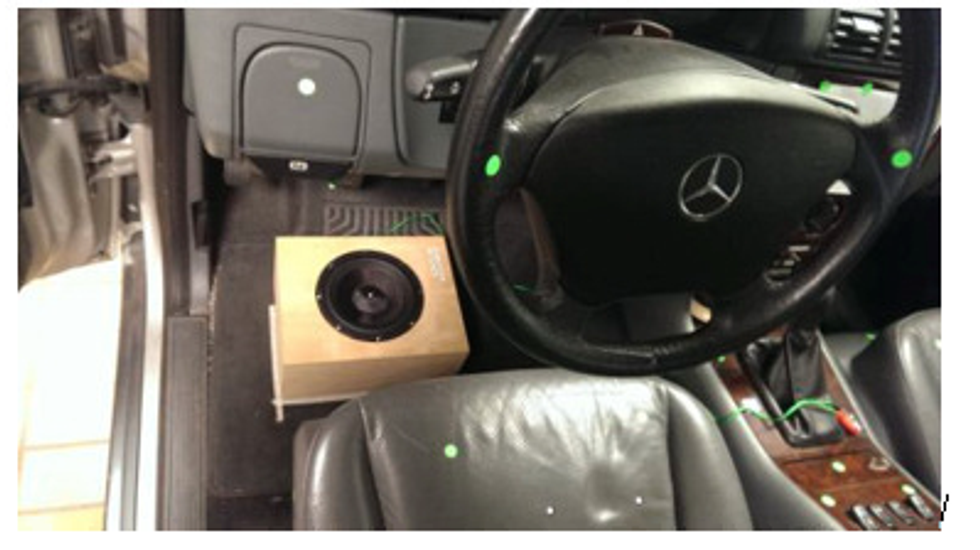
To support companywide engineering efforts, Strauss’ team established a library of validated models and known solutions that allows for performance predictions of a wide variety of loudspeaker configurations. "We are able to offer everything from a high level trend analysis to a detailed design examining the performance of a subsystem," he continues.
Analyzing Vehicle Loudspeaker Performance
In one study, engineers at HARMAN used COMSOL to create a simulation of a car cabin’s sound system in order to optimize the speaker acoustics, specifically for low-frequency soundwaves. They then designed a series of tests to validate the model. Once validated, the model would allow the HARMAN team to deduce the best loudspeaker setup for a given car.
In validation tests, a loudspeaker was mounted on a rigid enclosure near the driver’s seat of the car. Four sets of microphone arrays throughout the cabin served to measure the average sound pressure levels at each location (see Figure 2).
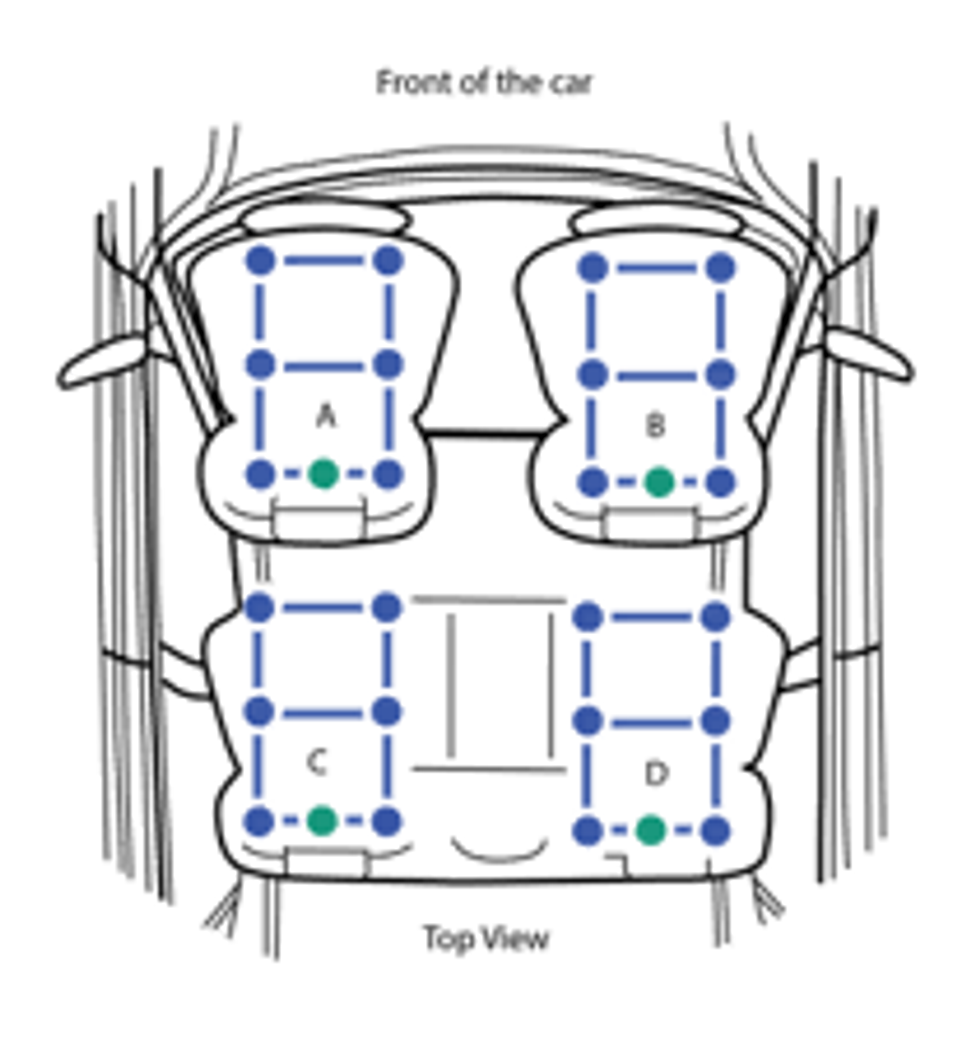
For frequencies below 1 kHz, the loudspeaker was represented as a rigid flat piston tied to a simplified lumped parameter model (LPM) taking into account the voltage at the voice coil terminals and the stiffness of the suspension and speaker membrane surface. The geometry was generated from a manual 3D scan (see Figure 3). Using a postprocessing algorithm implemented in MATLAB® software and an add-on product to COMSOL® called LiveLink for MATLAB® that creates a bidirectional link between the two programs, the team converted the point cloud created by the scan into a surface mesh of the car cabin (see Figure 4) and created an optimized mesh for studying acoustic pressure waves.
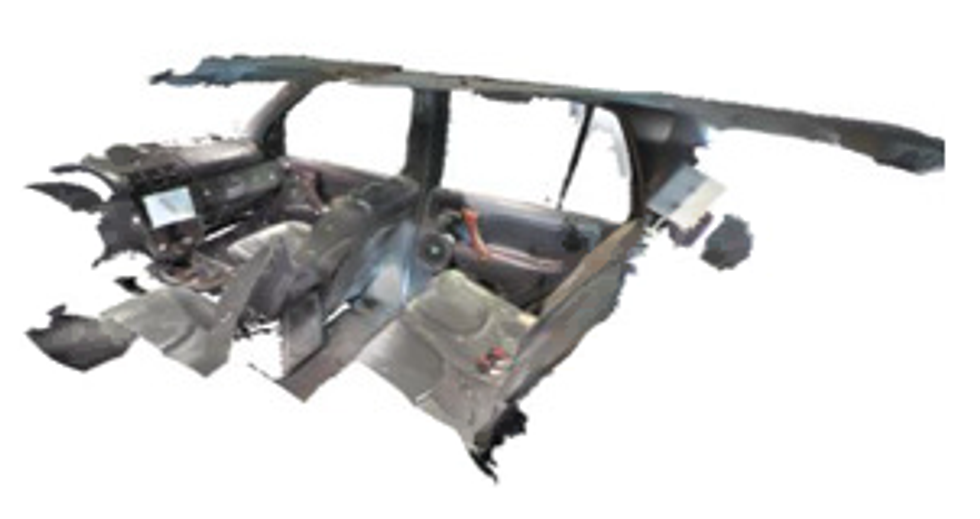
The simulation analyzed the interaction of the sound waves generated by a speaker with the different materials of the windshield, floor, seats, headrests, steering wheel, and other sections such as the roof, doors, and instrument panels, each of which have different absorption properties.
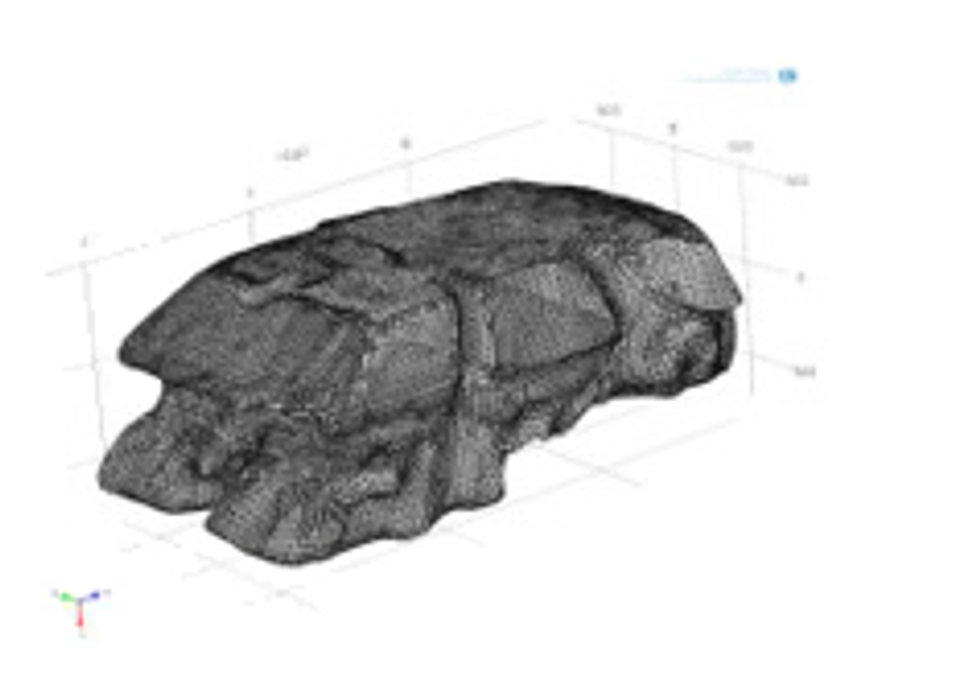
Optimizing the Acoustic Model
In addition to accounting for many different materials, the team also defined speaker membrane motion and acceleration based on the volume of the enclosure using the Livelink™ for MATLAB® and developed special MATLAB® scripts to simplify the preprocessing and postprocessing activities.
"Everything is fully optimized and automatic so that we do not have to calculate the acceleration for each case; when one simulation finishes, the next launches," explains Michal Bogdanski. "This ensures that the whole process is easy and error-free; we simply let the scripts run."
The team also optimized the frequency-dependent absorption coefficients necessary to achieve a strong correlation between the measured and simulated sound pressures. The analysis then provided the sound pressure levels emanating from each microphone array (see Figure 5).
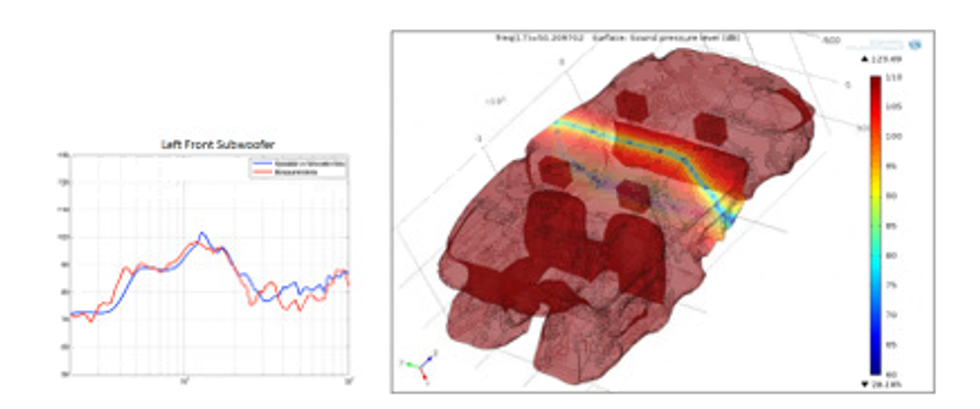
Objective and Subjective Evaluations in the Driver’s Seat
Using their validated simulations, HARMAN is able to begin developing a sound system even as a vehicle is still being designed. The accurate prediction of the sound pressure field throughout the car cabin allows for optimization of audio system performance. Equalizers and psychoacoustic effects are also included in their tuning algorithm, allowing for design modifications without the need for a physical prototype.
Auralization, or the production of sound from virtually computed acoustics, is of interest in the pursuit of a top-notch sound system. Using a high end headphone, Engineers at HARMAN have developed a playback system that allows, for listening, evaluation, and comparison of audio systems comprising subwoofers, midranges, and tweeters," says Malbos, "All based on simulation results and signal processing."
HARMAN engineers include the effects of the human head, torso and ear canals on acoustics in predicting Binaural Impulse Responses (BRIR), or how ears receive a sound. To capture the full 3D sound, BRIR are computed at various head positions in the azimuth plane. The playback system uses a head position tracker to perfectly reproduce the sound experience as the listener would experience it, e.g. in the driver’s seat.
Figure 6 depicts the mesh created using COMSOL® software that was used in predicting the BRIR. Figure 7 shows a comparison between predicted and simulated BRIR.
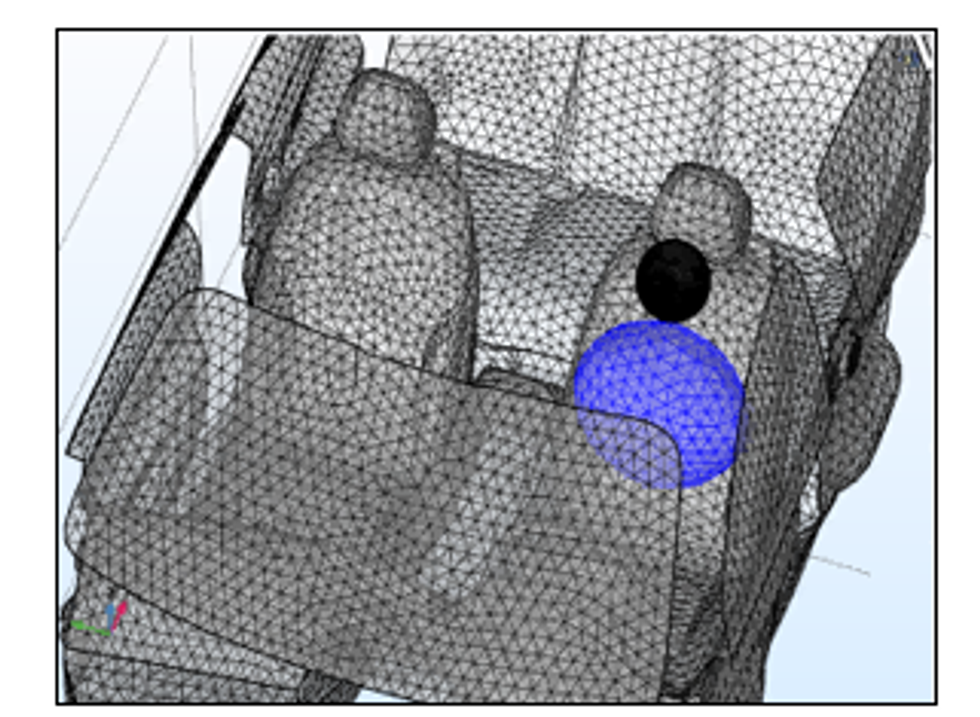
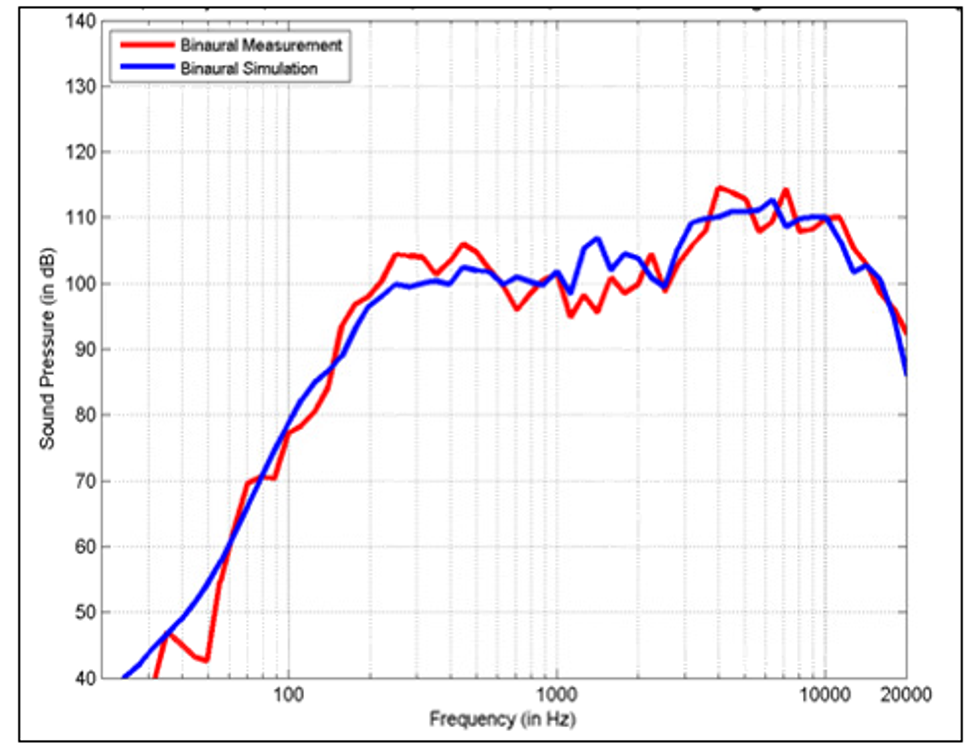
Auralization is not without its challenges. Auralization quality, a measure that is inherently subjective, must compare to real-world listening. As such, subjective measurements are made to ensure the quality of the listening experience.
At HARMAN, the ability to assess an audio system based purely on simulation has increased the quality of product and speed of product development. It also has improved customer responsiveness, and lowered the cost of design amendments, fostering a sense of design freedom among the engineers.
"The beauty of simulation is that a systems engineer can sit at a desk, put headphones on and begin to tune a system without the car," Says Strauss. "Using simulation Harman engineers will be able to assess, optimize, predict and subjectively evaluate the performance of a proposed sound system, even though it does not actually exist yet."
To read more about multiphysics simulation, click here.
